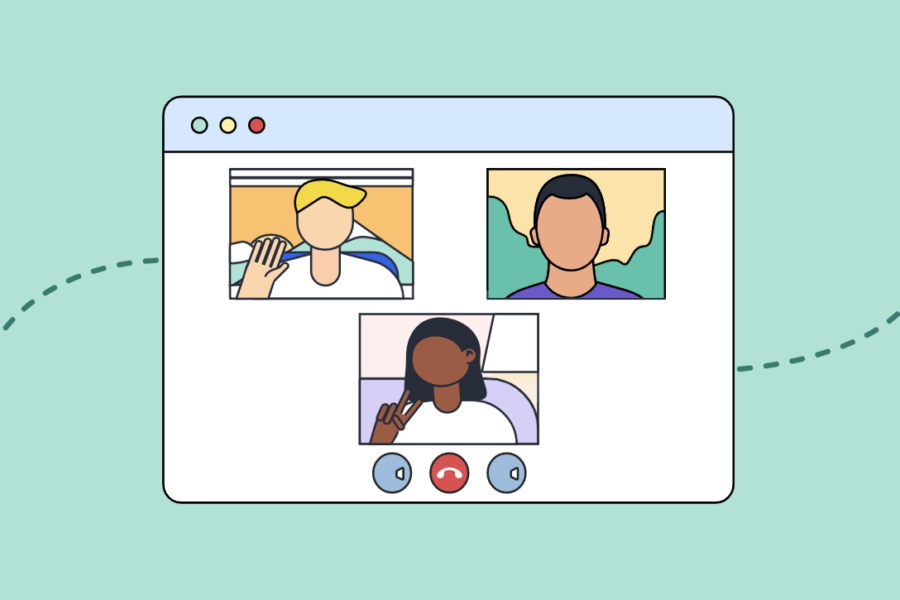Digital Project Managers work in one of the fastest moving industries out there. As soon as one technology is launched and stable another new alternative is released. Web design and development trends are in constant flux, what was a cool and effective solution one day is inefficient and out-dated the next, and I bet I’m not alone when I say that each time a new project starts someone on your team will suggest using a new design trend or technology.
Add to that the nature of running a business where cash flow is critical, other projects can knock your carefully thought out plan sideways or a key client ring up with urgent requests that require resource you booked months in advance, and you have a delicate situation indeed.
While web trends and technologies evolve around us at a rapid rate and business requirements can often change on a week by week basis, a Digital Project Manger will have to make constant decisions on what solutions to ultimately deliver to the client and often these decisions will not please everyone involved in the agency or project.
So who are these people and why may they not be happy bunnies?
Who you may annoy as a Digital Project Manager
In short, as a Digital Project Manager, making final decisions about which solutions to implement, the chances are at some point you will annoy absolutely everyone who is involved in projects… not an appealing part of the job, but sometimes a necessary and unavoidable one.
The Project Manager can’t ensure that they’ll be loved by everyone – nor do they want to be. They aspire to be well respected by the customer, but even that can’t always be guaranteed no matter how well they perform and manage the project. But, the Project Manager can ensure that everything that is expected of them is being performed well and if that doesn’t always do it for the customer at least it should be noticed by the delivery organization.
Brad Egeland, Reputation is a Fragile Thing
But before you get scared and begin to re-think that career move into digital project management, let’s look briefly at what each team member generally wants from all projects.
Empathise and understanding
Empathy and an understanding of the business forces driving different people’s motives are key skills required by any Digital Project Manager as it enables you to appreciate other perspectives when making project decisions.
Let’s take a look at the usual suspects, who they are and what they want from digital projects and your digital project management. *Stereotype disclaimer included afterwards.
Digital agency directors
A digital agency director wants the project completed on time, on budget, to a quality level that is fitting to the web agency and with the client feeling happy, wanting more work and willing to give referrals to potential clients.
Finance Directors
A finance director wants the project milestones split up in such a way that cash flow/collection is maintained for the business and thus that the project is completed to schedule, on time and on budget.
Web Designers
Web designers want to push the boundaries with each design, creating designs that make the client happy, are worthy of the web agency’s portfolio and any web design showcase site.
Web Developers
Web Developers want to use the latest technologies in order to implement the most efficient solution possible and keep the web agency on the cutting edge of the industry.
Digital project clients
Clients want to receive a website that is as future proof as possible and facilitates them being able to achieve their short and long-term business aims. Unless otherwise informed, they will assume the website has been built to excellent standards but probably won’t care what doctype has been used so long as it looks and works perfectly for their users.
Digital Project Managers
In the middle of everyone is the Digital Project Manager, and he or she will want, and often be expected, to meet ALL of the expectations above. But if you work with other Digital Project Managers they will want your project to run on time so that their own projects can also be on schedule.

Cool, that’s everyone nice and neatly packaged and stereotyped, so why is it not always possible to please everyone, and as a Digital Project Manager, how can you try to make sure everyone’s as happy as possible?
Consider, analyse and communicate
It is vitally important to understand that, in most cases, everyone’s intentions are good! They are always geared towards delivering a great project and growing their companies!
Understanding this first fact is crucial when you’re being pulled in every direction trying to keep people happy. Failure to understand this results in a very defensive posture when challenged and that usually leads to bad things.
When you have to make a digital project decision the key is to always:
- Consider everyone’s perspective, goals and motives
- Analyse and make a decision
- Communicate why you made the decision
This sounds simple and thus you would think it easy to articulate in a paragraph, but after trying to do just that and failing quite dramatically, in much the same way as Greedo tried to apprehend Han Solo, it seems best to illustrate the point using a few scenarios Digital Project Managers face every day.

Developer: “Let’s use a new technology”
You have the client requirements, you communicate this to the development team and you hear the phrase you know both excites and scares you…
“We could use [insert_new_digital_technology_here] for that feature.” – It’s time to and make a decision.
The first step is to consider why the developer is suggesting to use a new technology as opposed to the one the agency has experience using – it will generally be for one of the following reasons:
- The new technology has the potential to be far more performance efficient than the current one
- Using the new technology will mean less repetitive work in the future
- The developer fancies trying out (playing with) the new technology
Next a Digital Project Manager should analyse if using the new technology is a decision that will improve the project, web agency and/or client’s chances of meeting their business aims.
To do this it is important to make sure you fully understand the technology in question so you can assess the potential benefits and risks.
In order to make a decision a Digital Project Manager needs one or all of the following because ultimately you are 100% responsible for the project’s outcome:
- Experience in the technology being put forward as a possible solution
- The aptitude and willingness to research the proposed solution
- Absolute trust in team members to make the right decision
Once you understand the technology, assess it against the project and decide if the long-term benefits justify going for it and then communicate your decision and reasons why to your team.
If you choose to go for it then you should communicate the possible benefits of using it to your boss and add the caveat that it is adding a certain risk to the project and thus could cause some overrun. Of course you may be overruled, but if you think it’s worth it, put your case forward and do everything you can to make sure the benefits are clearly visible.
If you choose to reject the idea you should do more than just say “no” to the development team, instead communicate to them the reasons why you are making this decision, which could include:
- Using the new technology brings too much risk to what is already a fragile client relationship that needs complete stability right now
- You feel the advantages of the new technology are not strong enough when compared to the current stable one you use
- The new technology is not mature enough to be used on a high-profile site
- The cross browser compatibility is not broad enough to warrant use
- The project budget is already extremely tight
It’s quite possible that, even after explaining your reasons, team members will still be unhappy and you will get the shaking heads and sighs that translate as “This Digital Project Manager is really stuck in his ways and is holding this agency back technically!” It’s at times like this you just need to have a thick skin and have absolute conviction in your decision.
As I’ve said before, as a Digital Project Manager you are responsible for the entire outcome of the project and thus the client satisfaction, deadlines, budgets, agency cash flow, reputation and whole host of other business critical factors – the technical solutions provided are the complete focus of the developers, but in the grand scheme of things only one part of many and you are the one with the complete overview.
Communicating this to the development team regularly will hopefully raise their awareness to this fact and make them more commercially aware, and that can only be a good thing for any web agency.
Always playing safe
As a little side note however, making the ‘safest’ decision is not always the best move, sometimes it’s best to just go for it even if you think the chances of success are smaller than you’d like…
This is how web agencies move forward, by occasionally throwing caution to the wind, taking risks and pushing the boundaries! If it works, you and your team are great, if it doesn’t, blame will be laid squarely with you – but hey, as a Digital Project Manager you should be used to this situation right ;-) and better to have given it a go than always play safe!
MD: “Why are we going over budget?”
Oh the words any Digital Project Manager fears… it inherently is coupled with the assumption the project has been managed poorly and thus you should be hung, drawn and quartered. On some occasions this is exactly the case and it’s best to just admit it, learn from it and try to make sure the same mistakes aren’t made again – it happens to us all, its how we become better.
However, on the odd occasion a Digital Project Manager has consciously made decisions that they knew would cause the project to overrun, but in doing so have achieved, or gone part way to achieve, a web agency’s business goal that aligns with the long-term strategy.
Examples of this include using digital project tasks or phases to:
- Train a team member in a new skill and/or give them experience
- Develop new digital project management processes
- Create a stunning agency portfolio site
- Develop a new re-usable plug-in for a CMS
- Make a very important client very happy
Of course an agency would ideally be able to satisfy all of these requirements on a regular basis within project timelines and budgets, but let’s face it this isn’t always possible so you have to grab any opportunity you can and go for it – remember, over budget doesn’t always mean zero profit.
The important things are to consider if this is the right task, project, client account or time in the business’s life to go over budget by using your knowledge of all four to analyse the best course of action.
If your analysis leads you to the conclusion it is worth it, then communicate to the big boss man (or lady), preferably before you announce the decision to the team, that this is why you went, or are heading, over budget on this particular project, but, the agency now has a:
- Trained up team member who has a new skill that can be utilised on future projects
- Happy team member who feels they are growing in experience and skill
- More refined and efficient digital project management process
- Website or web application that will ‘wow’ potential clients and makes the whole agency proud
- New, or vastly improved, CMS feature plug-in that can be deployed in minutes rather than hours
- Great chance for repeat account business and glowing referrals
If you can communicate the reasons you made a decision that meant your project overran and demonstrate that it will provide a potentially viable amount of return on investment, more than the over budget time spent, you should get the thumbs up and it’s full steam ahead.

Client: “I want to add a new feature”
Words from a digital project client you could almost bet your life savings on hearing at least once per project and after all functionality has been agreed upon and budgeted for in terms of money and resource allocation.
However, in order to shy slightly away from the traditional Waterfall project management methodology, a Digital Project Manager’s response to requests like these should never be an instant “no” because a specification has been signed off for several reasons:
- They could have additional budget and be willing to extend the project’s timeline in order to fit the new feature in
- Other parts of the project may be ahead of schedule and under budget, leaving room for additional work
- They may be willing to sacrifice a previously agreed feature to get the new one in
- There may be an alternative and quick to implement solution that will see the same aims achieved
- The feature in question may be one your web agency have been thinking about developing before to sell to other clients
- “No” should only ever be the words you use if after analysing the request it is deemed in no way possible
Before making any decisions a Digital Project Manager should first consider why the client is asking for this feature and why now.
The common response to these requests is to huff and puff about how typical of a client this is, assume they are being cheeky and trying to squeeze the web agency as much as possible etc. But, for the most part, clients are savvy business people who know their industry, market and target audience better than you and thus the late feature request could well be a reaction to something happening in their field that makes a seemingly daft request quite a sensible one.
Start by having a discussion with the client about why they want this new feature, more importantly what business reason or digital project KPI they feel it will help to satisfy.
Once you have fully considered why the client has made the request, the next step should be to analyse if the new feature:
- Will help the client’s business or project aims
- Can be completed under the current budget, timelines and required resources are available
- Would require additional budget or timeline extension
- Could be re-sold to other clients
Once you have analysed the information and made a decision, you should then communicate it to the client.
If you decide to allow the feature in the client will be over the moon and they’ll love you to bits, sweet.
If you decide that the feature should/will not be allowed in, then you will get a mixed bag of reactions depending on the client, but how you communicate this decision can influence the reaction immensely!
Take the client through your decision making process step by step, explain to them the hours you estimate the new feature would take just cannot be accommodated unless they agree to provide further funding or sacrifice another project deliverable, or how the feature would probably not in fact achieve what they would hope it too – the more transparent you are about your decision making process when communicating the decision, the more understanding you’ll generally find the client to be.
Learning how to say “no” to a client is an art form for most Digital Project Managers.
Guaranteed happiness for one and all?
Digital Project Managers are constantly pulled in every direction by everyone – they are always in the middle of everyone and their priorities. It requires a great deal of strength, understanding and negotiation skills to be able to deal with these pressures and end the project with all parties feeling positive – remember Digital Project Managers’ motives are also always focussed on delivering value, not only for the client, but their web agency as well.
By following the consider, analyse and communicate decision making process during digital projects will not always result in happiness for everyone involved, but being honest and transparent about how you reached the decision and why you believe it is the right one for the project, web agency and client should go some way to reducing any friction that could be caused otherwise.
What tips do you have for keeping everyone as happy as possible when making digital project management decisions?









Great insight! Seems to have come at a time when I need it most.
I like some special momments
Nice article..feel so much at home reading it. :)
Hi first time visiting this blog, nice article.
Very Nice and detailled article about issues I deal happily with every day!
Great article. Really Inspiring
Hey everyone, thanks for the comments, really happy you liked the article :)
It’s times like this I’m glad to be a freelancer and have often been able to collaborate with other agencies on a case by case basis! Nothing worse than infighting & politics.
Very true Sahus, maybe the trade-off between freelance and full-time is freedom from politics versus job security?
But even as a freelancer I think you could do well to use the consider, analyse and communicate approach when working with the agencies or clients – as a freelancer you are more of a project manager than perhaps you realise!